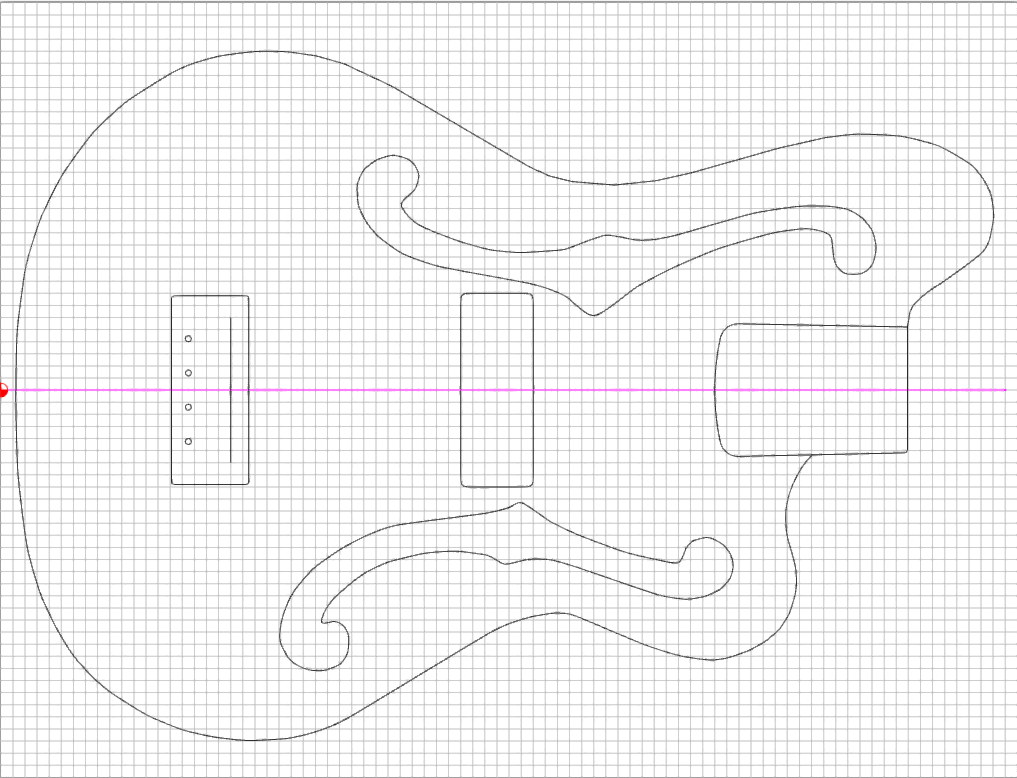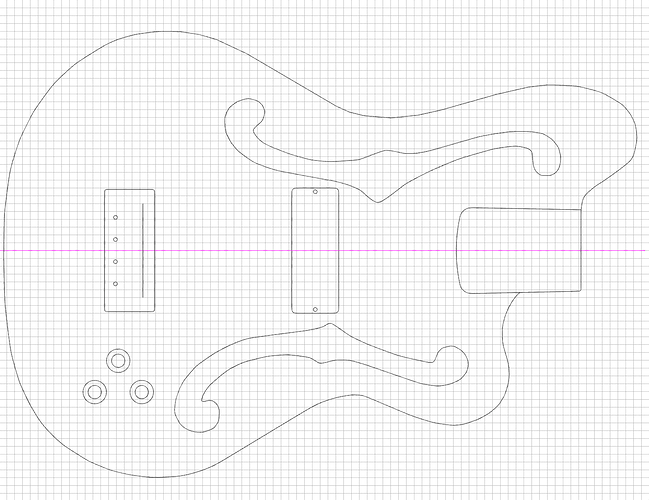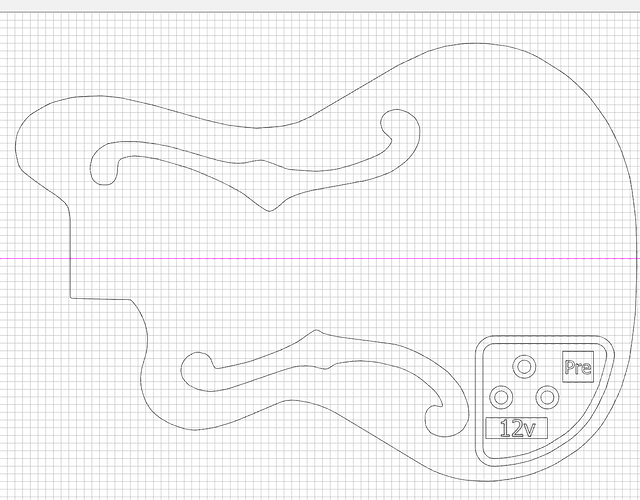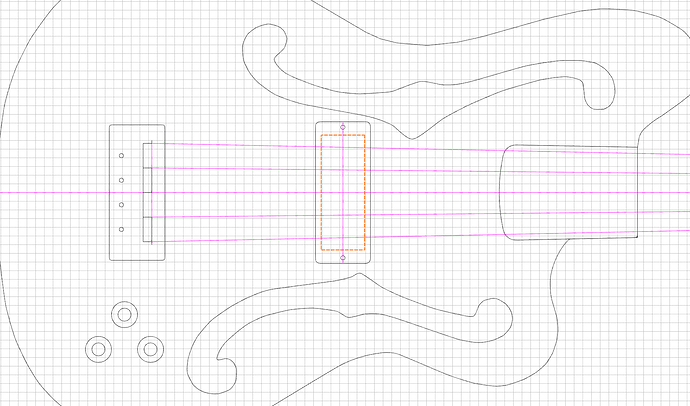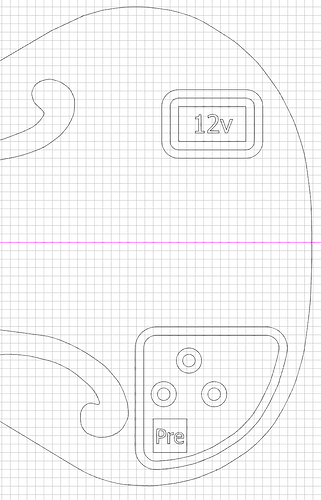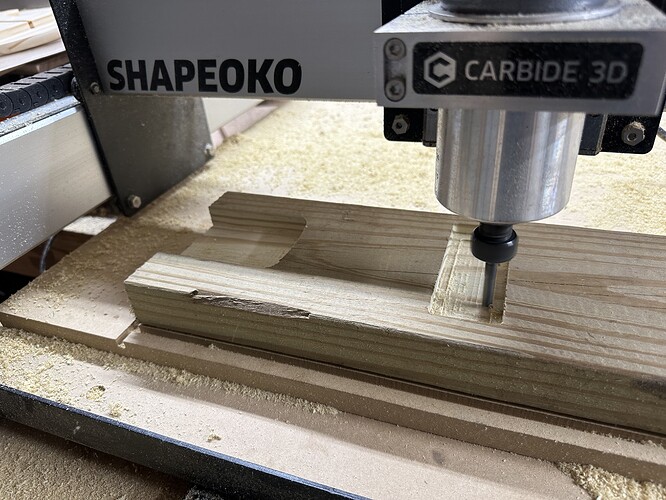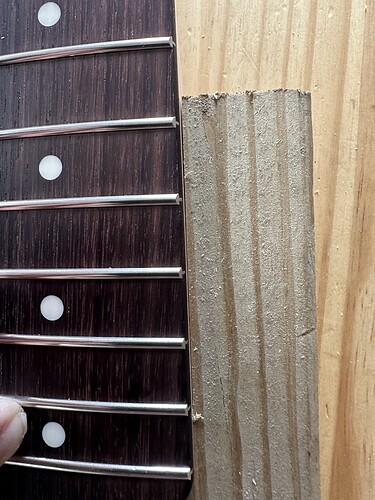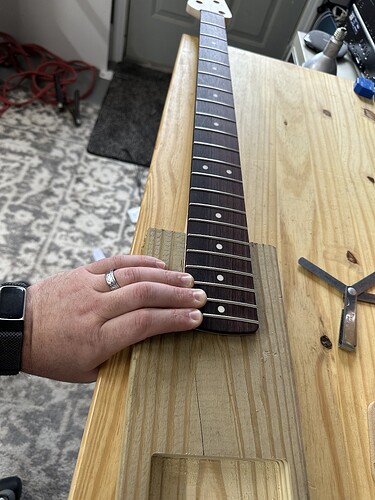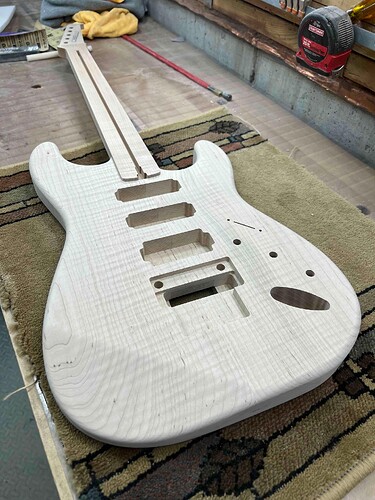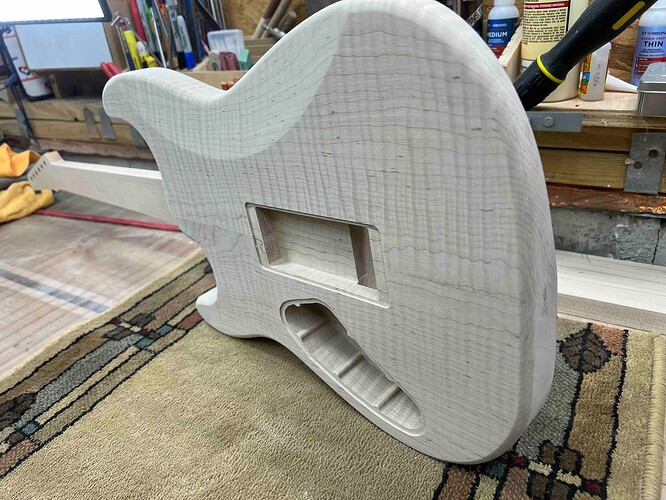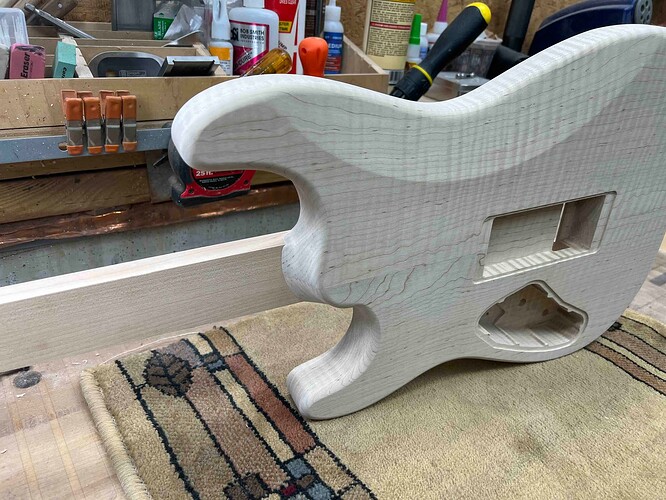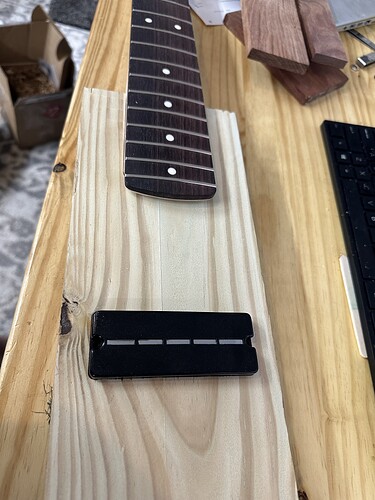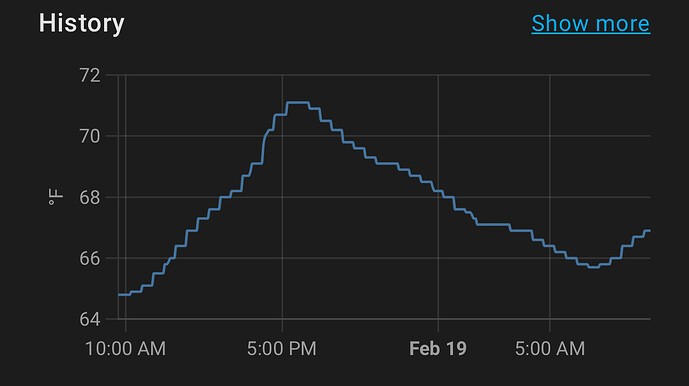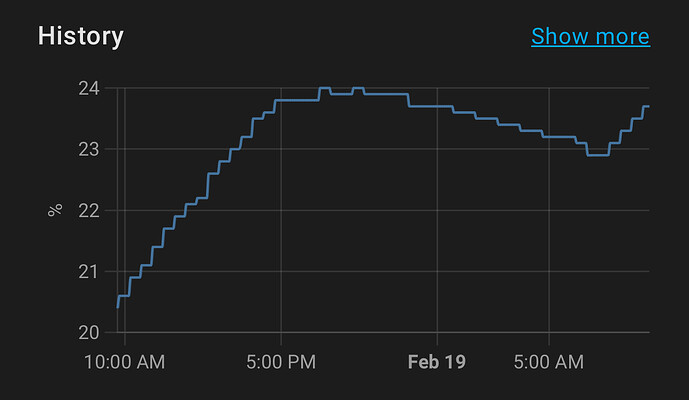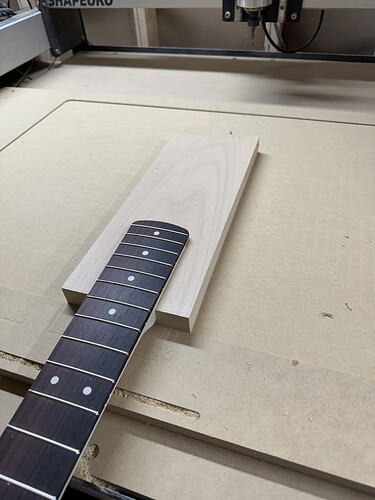I have been a bass player for probably 28 years now (wow that hurts to say that number out loud). The Ampeg AMB or AEB-1 basses have been a major drool factor for me for a long time.
I really prefer playing 5 strings over four, and unfortunately (or maybe fortunately, given how much money they are) the Ampeg bases were only every available with 4 strings.
And now, since I have a Shapeoko, I can build anything right? Well, we’ll see. ![]()
So here is the project, a (some would say) bastardized version of The AMB/AEB-1! For now it will be designated the BAB-5 until I can come up with a better name.
Updated Designation: ASO-5
The Plan:
- Ash body
- 34" Scale
- Aguilar DCM pickup in the EMG 40 size
- Aguilar OBP-3 Preamp (somehow)
- Hipshot Vintage 5 Bridge, 18mm spacing
- AllParts BRO-5 neck. (I wanted to use a Warmoth Deluxe 5 because of the asymmetrical neck profile, and still may, but I have this neck on hand already)
- Hipshot Ultralight Tuners
- Dunlop flush-mount strap locks
Things yet to figure out:
- Finish
- Pickguard or not.
- Depending on pick guard, then I would need to create my control cavity (or maybe more than one) from the back.
I have spent quite a few hours getting the neck pocket right, or at least what I think is right, and getting the bouts re-aligned to the new neck pocket size. I have also adapted the pick guard design to match this iteration of the body, neck, pickup, and bridge. So here are some shots of the design so far.
Here you can see the placement of the bridge, pickup, f holes, neck and the pick guard. No control cavity so far.
The pickguard by itself
And then the body by itself.
I can really see it in my minds eye without the pickguard, and I think it would look pretty nice. But I am not sure yet.
So anyway, that’s the start of this project! In the next week or so I’ll be cutting neck pockets in test material to get that design aspect dialed in. Then after that I will maybe cut out a test body in some cheaper/thinner material for a sanity check on dimensions. By then I’ll hopefully have the front or back cavity thing figured and will get the rest of the design finished. Oh, and also how to flip a work piece. ![]()
Grab a drink, follow along! Should be a learning experience for sure.



